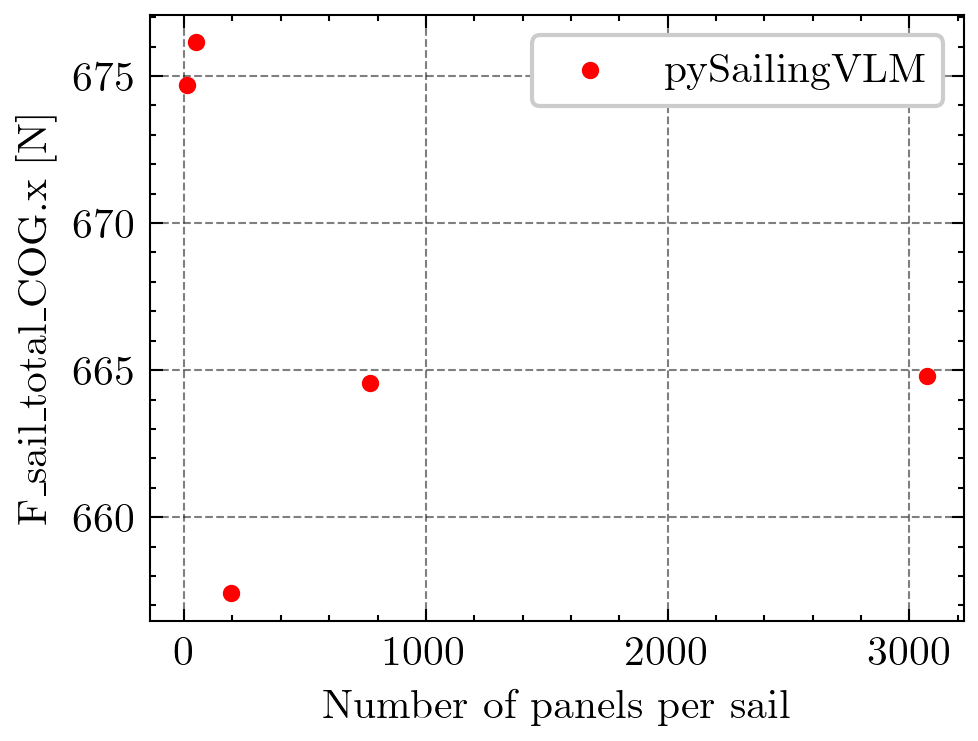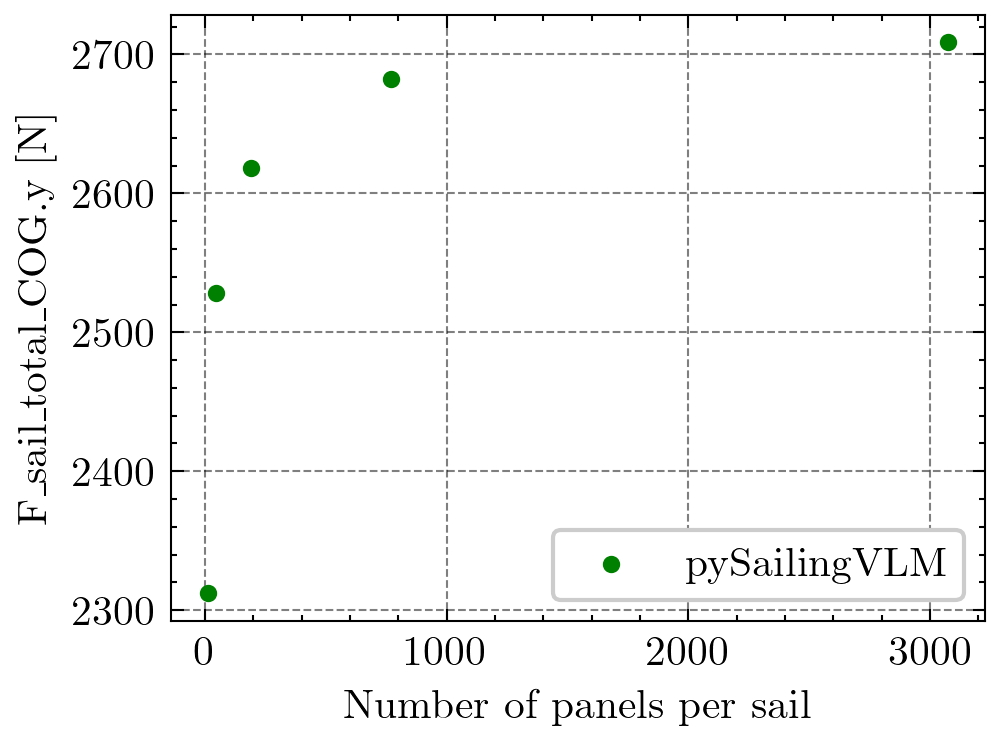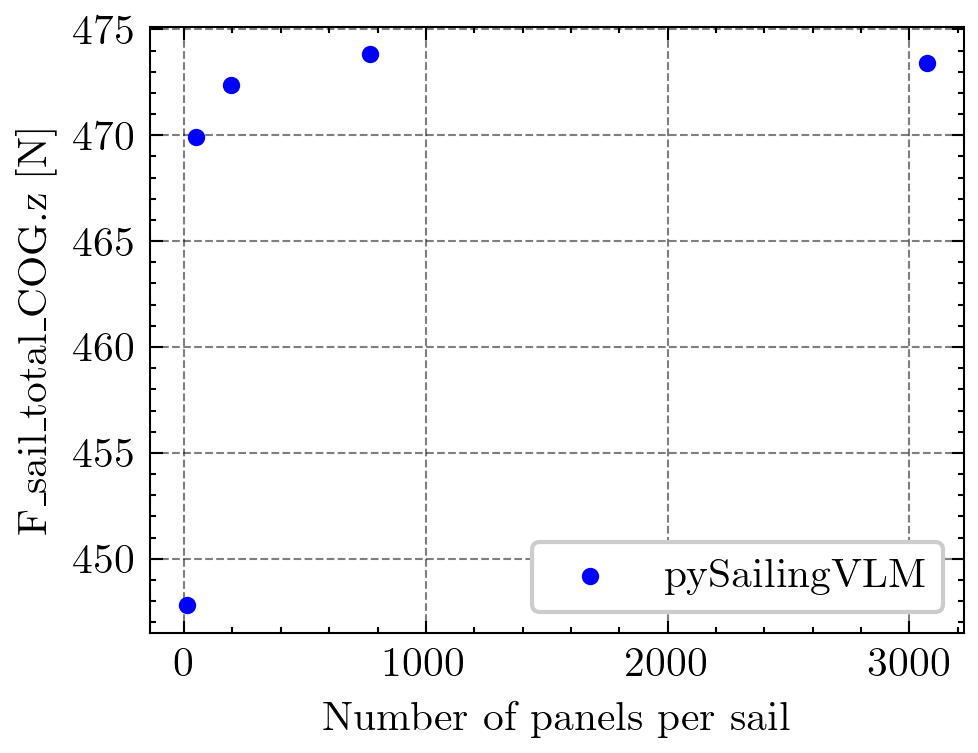Convergence#
pySailingVLM software allows user to specify the number of panels in a spanwise and chordwise direction. The more panels that are used during computations, the more precise solution will be obtained. Below the rc44 example is used to show the total force per sail (Course over Ground) convergence. The detailed program input values are describe in section RC44 yacht. Geometry of a sails and rig is depicted in figure 24. There is no leeway, heel is \(13^\circ\) , yacht speed over ground is \(3.446 \frac{m}{s}\) . The true wind speed is \(3.086 \frac{m}{s}\) with the angle of attack equal to 45 degrees. Simulations were performed sequentially for the following number of panels in spanwise direction per sail 6, 12, 24, 48, 96 and in chordwise direction: 2, 4, 8, 16, 32.

Fig. 21 \(F\_sail\_total\_COG.x\) convergence. Figure created by author.#

Fig. 22 \(F\_sail\_total\_COG.y\) convergence. Figure created by author.#

Fig. 23 \(F\_sail\_total\_COG.z\) convergence. Figure created by author.#
According to generated graphs, total force per sail (for all axises) converges to a certain value as the number of panels increases.

Fig. 24 Geometry of sails and rig. Mainsail girths and jib girts are horizontal, measured in meters and defined at percentage of the corresponding sail luff length of 0.25% 0.50% and 0.75%. Figure based on template from G. Gruszczyński.#